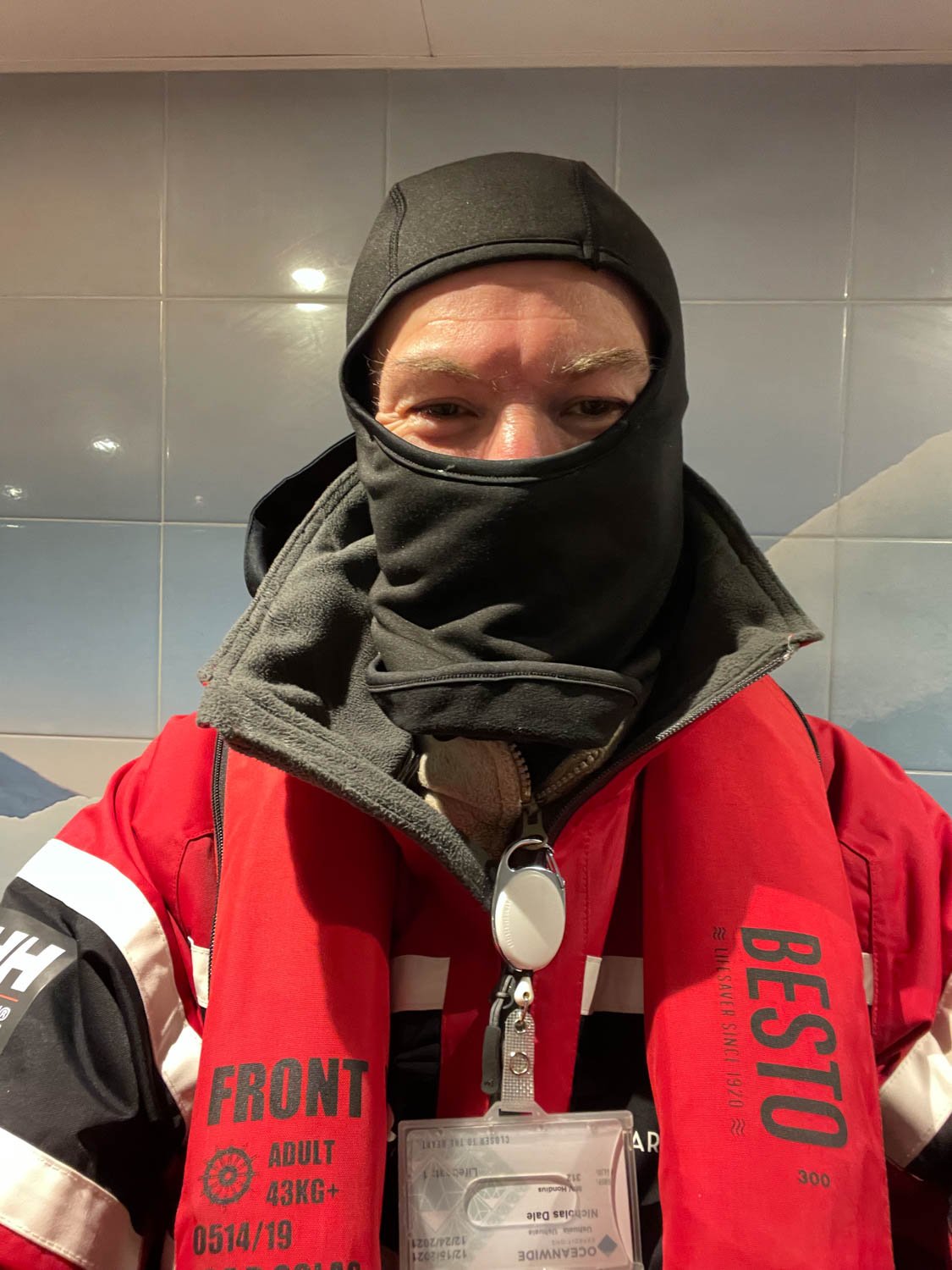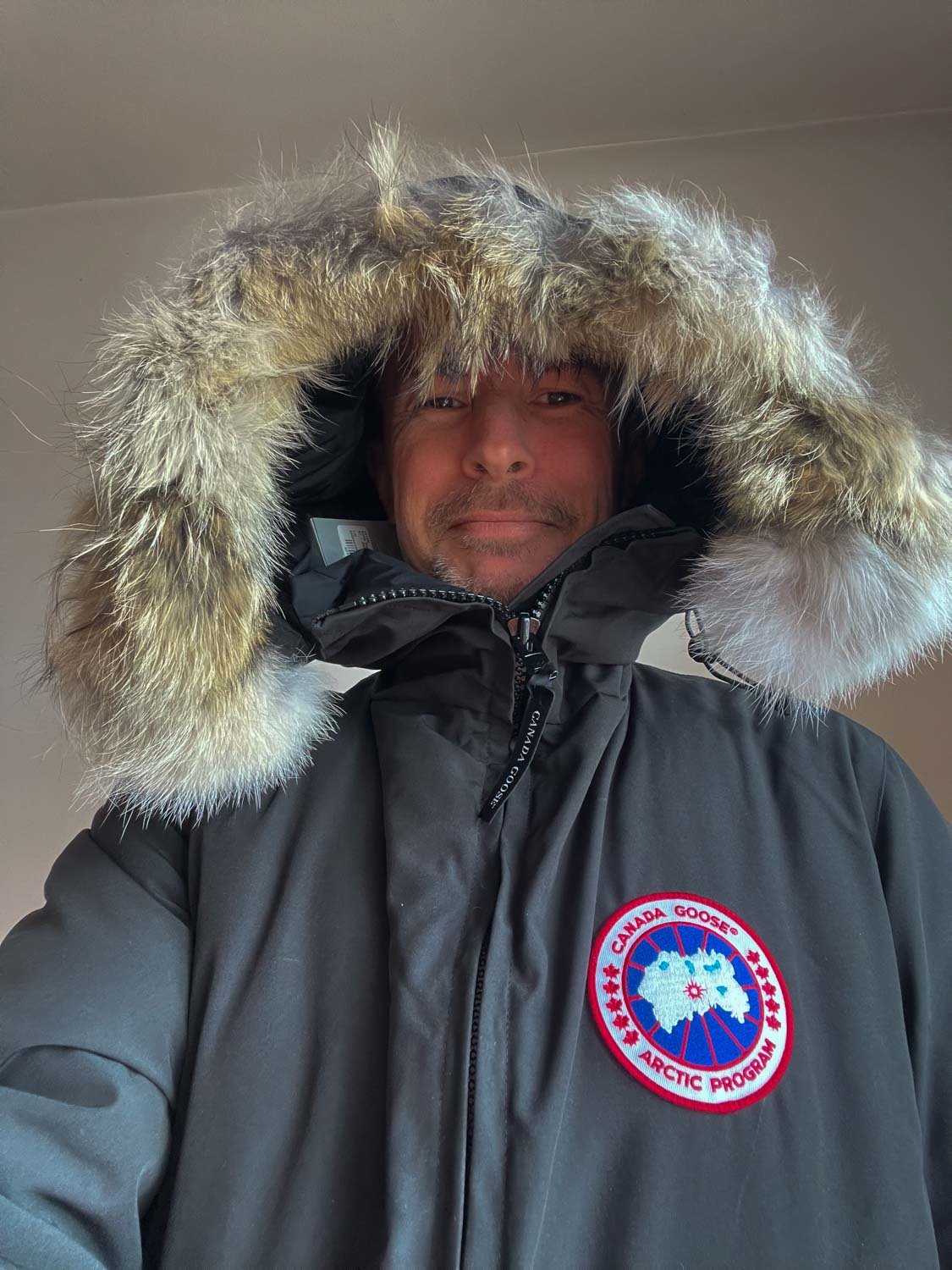Dress for Success!
Black is definitely not my colour…
Abseiling down a Kenyan waterfall…
Wherever you go in the world to take pictures, it’s important to wear the right clothing. I’ve worked as a photographer in 26 countries on all seven continents, so I thought I’d give you the lowdown on what I usually wear in different places and in different conditions.
Packing List
I used to pack my bag just before I leave the house, but that meant I did occasionally forget things. That’s why I now have a generic packing list. This is suitable for all destinations, but the clothing obviously changes depending on the likely temperature and weather conditions.
Here’s the clothing element of my packing list:
Sun hat
Black snood?
Gloves?
Hiking boots/trainers?
Deck shoes
Fleece
Rain jacket
Zip-off trousers?
Waterproof and/or ski trousers?
Shorts
T-shirts
Safari shirt
Base layers
Jersey boxers
Swimwear?
Thermal leggings?
Socks and walking socks
Goggles
All this should be fairly self-explanatory, but I should mention a couple of things. My rain jacket has an internal pocket that goes all the way round, so it’s ideal for squeezing in all my clothing when I’m on a trip.
I also have a SpiderPro belt with a couple of camera attachments that comes in very handy when I’m going to be doing a lot of hiking with my photographic kit.
Africa
On safari…
I go to Africa more than any other continent, and packing is usually very easy. There’s usually a free, overnight laundry service at the lodges where I stay, so all I need to do is travel in one outfit and pack a spare set of clothes in my jacket, putting all my gear in my camera bag.
The only issue really is the change in temperature during the day. Mornings can be quite cold in sub-Saharan Africa, but the sun can get very hot, so it’s worth taking either a jacket, a base layer or a long-sleeved shirt to give you a bit of flexibility.
In addition, I’ve noticed that you tend to get horse flies and/or tsetse flies in certain places, especially the Serengeti, so it pays to take a snood or balaclava to allow you to cover yourself up if necessary. Tsetse flies like to bite your ankles, so it might be worth wearing thicker socks and putting your trousers inside.
Now, I know some people aren’t very good at packing light (you know who you are!), but it generally works for me. I don’t like to put a bag in the hold in case items are damaged or lost (both of which have happened to me!), and my carry-on bag has only been found to be over the weight limit once—which just meant I had to pay a £60 fine.
I always find travelling stressful, but that’s generally because I’m worried about my camera gear rather than my clothing!
Arctic & Antarctic
Ready for anything…!
There are occasions when I go to the Arctic and the Antarctic, and that’s when my clothing plays a crucial role in the success and enjoyment of my trip! Feeling cold all the time and even getting frostbite is a good way to make yourself miserable—and it doesn’t help you get good pictures, either.
Fortunately, most cruises let you book appropriate clothing in advance, and you’ll often be able to get everything you need—even down to a pair of boots and a life preserver!
If you’re a regular visitor to colder climes, you might want to save money by buying your own gear, but it won’t be cheap. A good Canada Goose jacket will be well over $1,000, and you’ll need your own boots and inner and outer gloves (with Velcro finger openings) to avoid frostbite.
The one thing I won’t do again is to get a one-piece set of overalls. I thought it would stop me getting my bum wet when sitting on the snow, but it was actually a pain because I couldn’t take my jacket off when I went indoors!
Asia
The only country I’ve visited more than once in Asia is India. I go there for the tigers, and it can get very hot. I was on a tiger safari once, and the temperature reached 47° C in the shade! I didn’t mind as we were driving around most of the time, so there was usually a cool breeze, and we usually parked in the shade. However, that won’t be ideal for some people.
You might think that means you should just wear shorts, a T-shirt and a sun hat, but the other problem is that you do get occasional heavy showers. That means you need to have a waterproof just in case.
What makes it even worse is that they use Gypsies to drive around. These are open vehicles with no roof to provide any shelter from the rain. I was once caught in a rainstorm for a good quarter of an hour, and there was nothing I could do to protect all my camera equipment! In the end, someone had to be sent round to collect everyone’s cameras and lenses, but it was far too late by then…
Europe
Nick and Noah
The weather is probably more changeable in Europe than on any other continent—especially in Britain. That means you need to be careful about your wardrobe as you might experience four seasons in one day!
Part of the answer lies in taking layers, a fleece and a waterproof jacket (plus a rucksack to put them in). That means you can shuffle your resources to keep yourself cool, warm or dry enough, whatever the conditions.
Equally, there are many different European regions that place particular demands on your clothing due to the altitude, the temperature or other conditions. I went to Svalbard a few years ago, and they actually gave everyone all-weather suits and boots to wear during the Zodiac cruises (see above). That was very handy, as we were constantly getting in and out of boats in the shallows, and it could get pretty nippy!
North America
The jacket I’ll never see again…
North America is such a large landmass that you can expect a wide variety of weather conditions, depending on where you decide to go. There’s also a wide range of topographical features, including mountains, coastline, swamps, lakes and deserts, so one size definitely does not fit all!
I’ve been to Brooks Falls in Alaska and various national parks in the States, including Glacier, Yellowstone and Yosemite. However, those trips have all been in the summer, so what you need to wear will obviously change depending on the season as well as your particular destination.
If you go to Churchill to see the polar bears, you’ll probably have to spend a few hundred pounds on specialist ‘technical’ gear that’s going to keep you warm in all conditions. I went to Arviat on the Hudson Bay recently to see the annual polar bear migration, and I had to buy a pair of specialist boots, inner and outer gloves and a set of Canada Goose overalls—which BA then lost for me!
Oceania
Working hard…
Due to the lack of large predators, I don’t often go to Oceania (Australasia) to take pictures, but I did live in Brisbane for 18 months a few years ago, and I lived in linen trousers and a linen shirt!
Obviously, there’s a bit more to it than that, but the heat and humidity generally mean shorts and a T-shirt are fine. In some places (like northern Queensland), you sometimes get sudden rainstorms, so it’s worth taking a rainproof jacket, but, in my experience, they usually last for only a few minutes, and then it’s straight back to getting burnt by the sun again…!
South America
On a beach in the Galápagos
I’m writing this from a hotel lobby in Punta Arenas in Chile! It took me a while to get over to South America, but I’ve passed through Buenos Aires a couple of times on my way to Antarctica, and I’ve also spent a week in the Galápagos Islands and a fortnight in the Brazilian Pantanal.
My current trip is to see the puma and other wildlife in Torres del Paine National Park, which is in the southern stretch of the Andes mountains. Apparently, we won’t be climbing too far above sea level, but the winds are going to be quite strong, so I’ve had to bring jackets that are windproof as well as rainproof.
Like North America, South America is a big place, so it’s hard to give specific advice. If you’re in one of the more temperate zones, you can get away with wearing shorts and a T-shirt, but you should take a waterproof top with you just in case.
Verdict
It’s obviously hard to give specific advice on what to wear on photographic trips all over the world, but I hope this has given you a few items to consider. If you’re planning a trip and aren’t sure what to pack, feel free to drop me a line at nick@nickdalephotography.com. I’m always happy to help.
If you’d like to order a framed print of one of my wildlife photographs, please visit the Prints page.
If you’d like to book a lesson or order an online photography course, please visit my Lessons and Courses pages.


